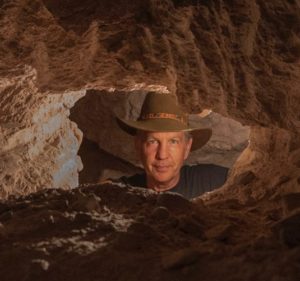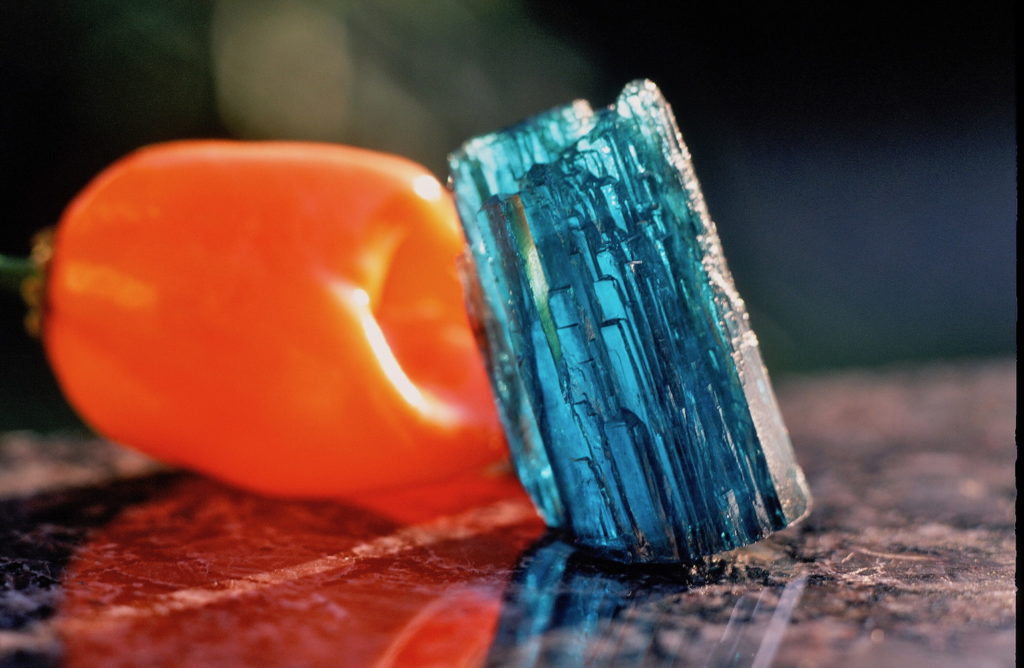 Brian was born in Salt Lake City, UT “awhile back.” He spent 5 years working as a firefighter, then studied Geology at Sonoma State University. After leaving college, he became a partner in an international grassroots exploration company based in Brazil prospecting precious metals, which quickly led to a personal interest in pegmatite exploration and mining. He has been involved in “Paraiba” tourmaline mines from 1988 to present, and in 1989 he established Nature’s Geometry Inc. with his wife Kendra, as a jewelry design, manufacture and lapidary arts business. In 2016, he was an AGTA Spectrum Winner for the Fashion Forward category. An early advocate of responsible sourcing in the jewelry trade, Brian has orchestrated an initiative for an artisanal small-scale mining community in Brazil and is currently involved in scoping studies to verify and audit stone sourcing in the Amazon basin. Brian & Kendra are based in Tucson AZ and Bahia, Brazil. They have 3 daughters and 2 grandchildren.
Brian was born in Salt Lake City, UT “awhile back.” He spent 5 years working as a firefighter, then studied Geology at Sonoma State University. After leaving college, he became a partner in an international grassroots exploration company based in Brazil prospecting precious metals, which quickly led to a personal interest in pegmatite exploration and mining. He has been involved in “Paraiba” tourmaline mines from 1988 to present, and in 1989 he established Nature’s Geometry Inc. with his wife Kendra, as a jewelry design, manufacture and lapidary arts business. In 2016, he was an AGTA Spectrum Winner for the Fashion Forward category. An early advocate of responsible sourcing in the jewelry trade, Brian has orchestrated an initiative for an artisanal small-scale mining community in Brazil and is currently involved in scoping studies to verify and audit stone sourcing in the Amazon basin. Brian & Kendra are based in Tucson AZ and Bahia, Brazil. They have 3 daughters and 2 grandchildren.
Sao Jose da Batalha, Paraiba, Brazil is the type locality for cuprian elbaite, dubbed “Paraiba” tourmaline. Cook’s talk will delve into the story of the discovery, tracing the long and twisted road to the present. It was initially discovered in the southern portion of the vast Borborema Pegmatite Provence in about 1988, in NE Brazil’s rugged outback Caatinga, a xeric scrub and thorny forest. Since its discovery, any news has always elicited excitement and anticipation because of the rarity and desirability; the beauty and mystique. Next, we travel to the western edge of the Chapada Diamantina of Bahia state in Brazil. Here rutilated quartz is found, famous for striking rich metallic colors and wondrous epitaxial star sixlings on hematite. The vast resource supports a remote community with a long history of mining, which started in the 1600s with gold deposits. This unique ancient volcanic sequence, 1.700Ma, Rio Remedios Fm, also holds rare earth elements in unusual minerals, with mineralization from the Brasiliano orogenic cycle dating to approximately 520Ma.
